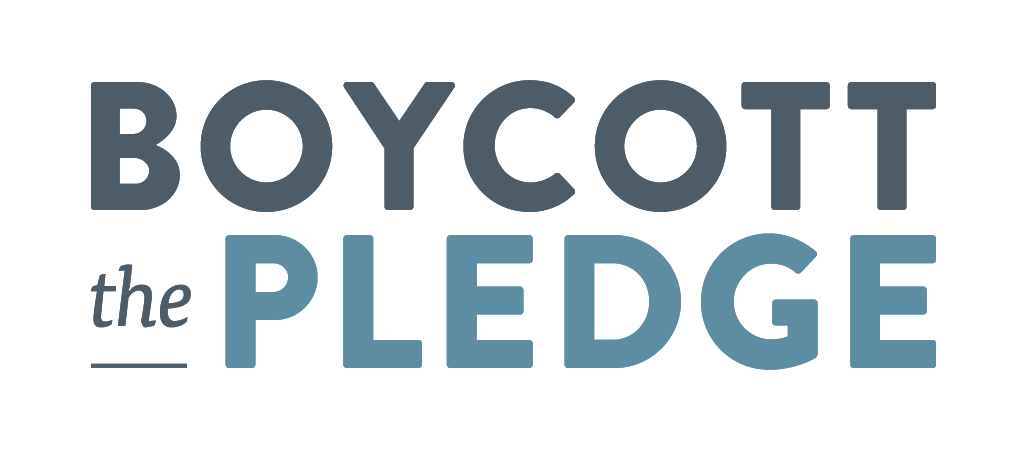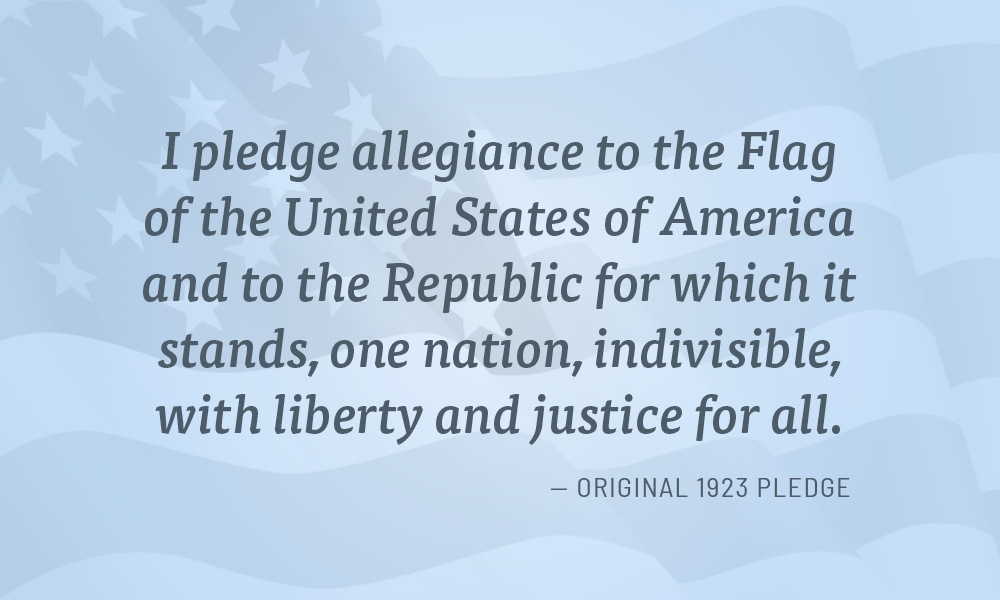About the Pledge of Allegiance
About the Pledge of Allegiance
“Under God” was not part of the original Pledge of Allegiance. Those two words were added to the Pledge in 1954, when the United States was in the grip of McCarthyism and communist witch-hunt hysteria.
Before 1954, the Pledge affirmed that we were “one nation indivisible, with liberty and justice for all.” Indivisible means we can rise above our differences, religious or otherwise. Liberty means the right to act and speak freely no matter what one’s faith or philosophy may be. And Justice, of course, means equal rights for all, regardless of whether or not we believe in a deity. The Knights of Columbus – a Catholic men’s group – led the lobbying effort to add “under God.” Now the Pledge is twisted, with divisive religious language that implies true patriots must be believers.
More than this religious divisiveness, the Pledge of Allegiance is aspirational, and not an accurate reflection of the state of American politics. There is not liberty and justice for all in our nation. Students should have the opportunity to, in public schools, exercise critical thinking to determine if they are invested in standing for the Pledge of Allegiance.
It is hard to imagine any exercise that is more inconsistent with critical thinking than one that has children repeating scripted words under the pretext that they are affirming their own personal beliefs. Indeed, many students may not understand what words like “allegiance,” “republic,” or “indivisible” mean. It would be hard to design a daily exercise that is more counterproductive, more hostile to the goal of getting them to think independently and critically, than rote recitation of an oath of national loyalty.

